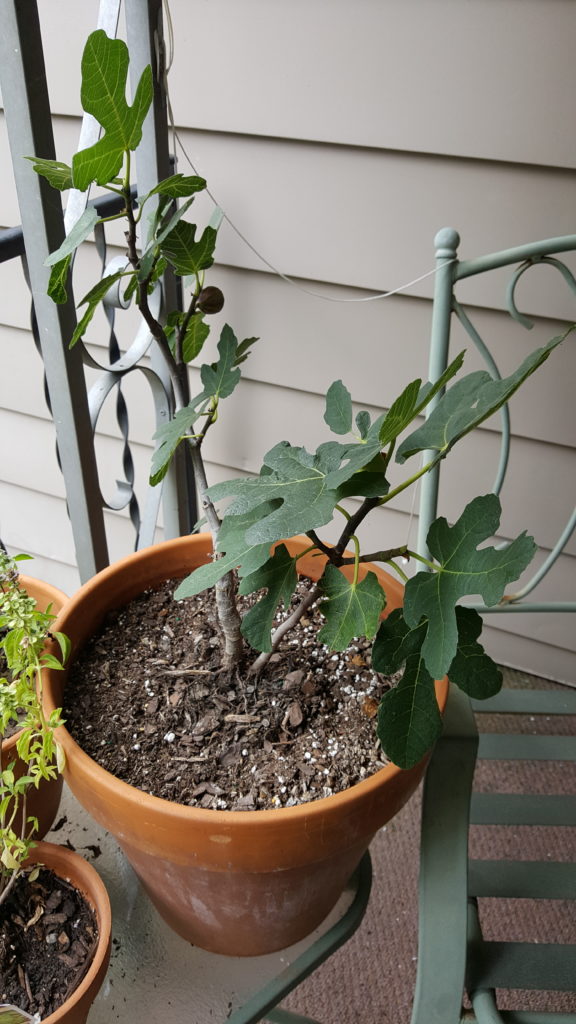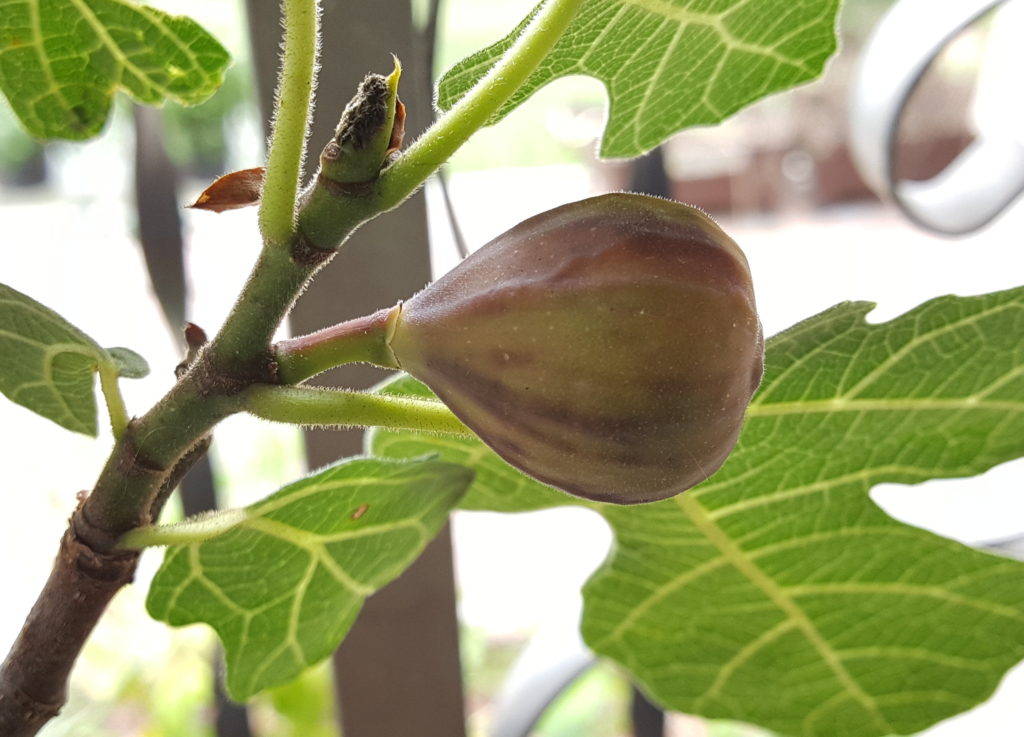Orchids have gorgeous exotic looking flowers, which can last for months. But can phalaenopsis orchids rebloom? Yes, with the right light.
Looking for something specific?




My first fig tree, 2016
Ever since 2016 when I saw a fig tree for sale at Lowes and convinced my mother to buy it, I have wanted to grow figs. Fresh figs are exotic to me. We always had dried figs when I was growing up. But the first time I had a FRESH fig was when I was in highschool, and I was immediately fascinated. Fresh figs are flavorful and juicy and nothing like their dried - and often hard - counterparts. The trouble is, they also like warm weather. Or at least, warmer winters than we get in west-central Illinois, USDA zone 5. That makes fig tree care a challenge.
Fortunately, there are cold hardy figs.
The Chicago Hardy Fig is usually listed as being hardy from zone 5 to 10. So as the name suggests, that means you should be able to grow it even as far north as Chicago.
But there is a caveat to the "hardiness" of Chicago Hardy Figs: the plant [i]should[/i] survive the whole winter, but it will usually die back. Generally when a plant is labeled "hardy in zone 5" that means it will fully survive the winter. In the case of Chicago Hardy Figs, their branches are only hardy down to 10 degrees Fahrenheit. This means that the tree will die back to its roots every year - even in a "mild" Illinois winter - and have to re-grow. It is only the roots which are hardy down to -20 degrees Fahrenheit (i.e. zone 5 winters).[source]
The good news is that the tree should produce figs on the new growth. But regrowing every year is, of course, a setback. You may only get one crop of figs, instead of the usual two per year.
The bottom line is that to grow a healthy fig tree in zone five, you need to protect it during the winter.
There are a few different options to protect your tree during the winter. One of them is to grow the fig tree in a pot, and then bring it inside. Another is to plant it in the ground, and wrap it up with burlap or another insulating material. And a third is to "heel in" your tree.
My first attempt to grow figs was in a pot, with the idea that I would bring the tree inside in the winter. This can be a very easy way to keep your fig safe over-winter, and care for your fig tree all year long. I have seen this method well for multiple years on end.
But there is a problem that comes with any potted plant that is kept outside in the summer, and brought in for the winter: bugs. The first year I brought my fig tree inside, it seemed to do really well. It survived the winter, and put on figs. But then the fruit began shriveling, and the tree started loosing its leaves. The cause? Mealybugs. I saved the tree (and you can read about it here), but pest problems remained a constant struggle.
The trouble is that pests, when they are outside, are naturally kept in check. But inside there is no cold weather or predators to keep them in check, and they can take over. So, if you are going to bring your fig tree inside, don't forget to treat it for bugs!
Fig trees are still trees, and as such, they will be happiest in the ground where their roots can stretch out. But remember, the hardiest of fig tree branches can still only take down to 10 degrees Fahrenheit. Even a mild zone five winter will have a cold night or two at or below that temperature. A cold winter will have multiple days below 0 degrees Fahrenheit.
So if you are going to try to keep your tree out all winter, they need a LOT of insulation. A sheltered southern-facing location would help. They will also need to be wrapped up in something insulating - such as burlap or bubble wrap, or both. Simply mounding leaves or mulch over their base will not be enough.

A delicious fig - the reward for good fig tree care
In the same vein as wrapping your tree, but even more protective, is "heeling in" the tree. Essentially, you dig a trench, and very carefully bend the tree over so that it is "laying down" in the trench. Then you cover it with mulch, sawdust, or the like.[source]
I have never been brave enough to try this method, but you can read about one person's experience with it here.
Winter care aside, figs are temperamental trees. Any discomfort is met with a giant temper tantrum.
And what does a tree temper tantrum look like? Why, dropping all its leaves, of course.
Is it too hot? The fig tree looses its leaves. Too cold? Drop those leaves. Too wet? Too dry? You guessed it... the leaves are falling.
But most of the time, when the fig's feelings are hurt, its a matter of water. Figs need a TON of water, which is a good argument for keeping them in the ground as opposed to a pot. If you do keep your fig in a pot, keep in mind that it will need to be watered every day in the summer. It may even need as much as a gallon or two of water a day once it gets big.
My first fig tree died a few years ago - I had to leave it overlong one winter, and that was too much stress for it. But that does not mean I have given up on figs! I have a new fig tree, in a large pot on my back patio. Come winter, I plan to wrap it up and put it in the garage for protection. I will update this post in the spring with my experience.

Orchids have gorgeous exotic looking flowers, which can last for months. But can phalaenopsis orchids rebloom? Yes, with the right light.
The story of a mealybug infested fig, and five steps to save a potted tree from a mealybug infestation.
The trials of growing figs in west-central Illinois. Are Chicago Hardy figs really viable?
